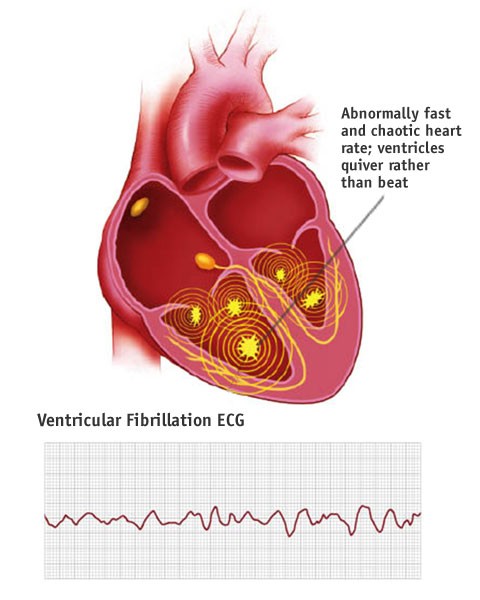Description
What is ventricular arrhythmia?

Ventricular Tachycardia
Ventricular tachycardia (VT) is a fast heart rhythm that occurs in one of the ventricles of your heart. It is like one electrical short circuit that races in a circle. In a VT, the heart beats with each race around the circuit at rates from 150 to 250 bpm.
One special type of ventricular tachycardia is called “right ventricular outflow tachycardia”, or RVOT tachycardia. This rhythm occurs in the part of the heart where blood is going from the right ventricular to the lungs.
As the heart beats faster, it pumps less blood. There is not enough time for the heart to fill with blood between beats. If this fast heartbeat continues, the brain and body may not receive enough blood and oxygen.

Ventricular Fibrillation
Another type of ventricular arrhythmia is ventricular fibrillation (VF). VF originates from many different locations in the ventricles, each one trying to signal the heart to beat. In this case, the heart beats much faster than normal, sometimes over 300 beats a minute. The lower chambers quiver instead of contract, and very little, if any, blood is pumped from the heart to the rest of the body. If your heart is in VF, you can become unconscious very quickly. You might not remember anything that happened just before or during the episode.
If these irregular, fast heart rhythms continue for a length of time, the body will not get enough oxygen-carrying blood. Without oxygen, the brain and body tissues cannot function normally and die.











